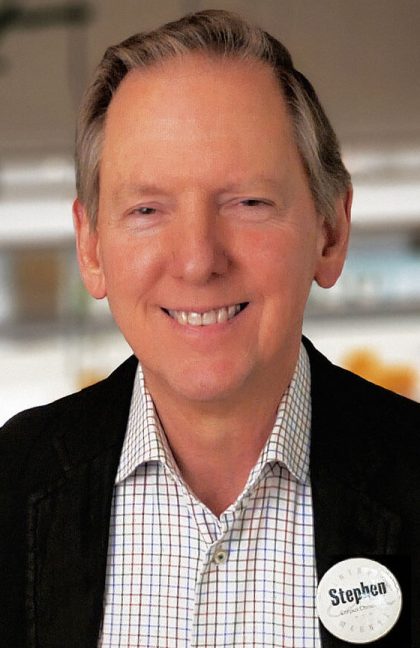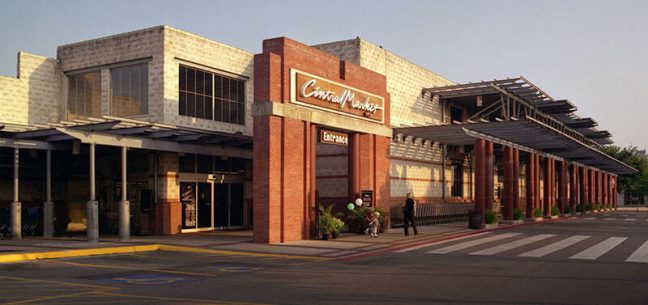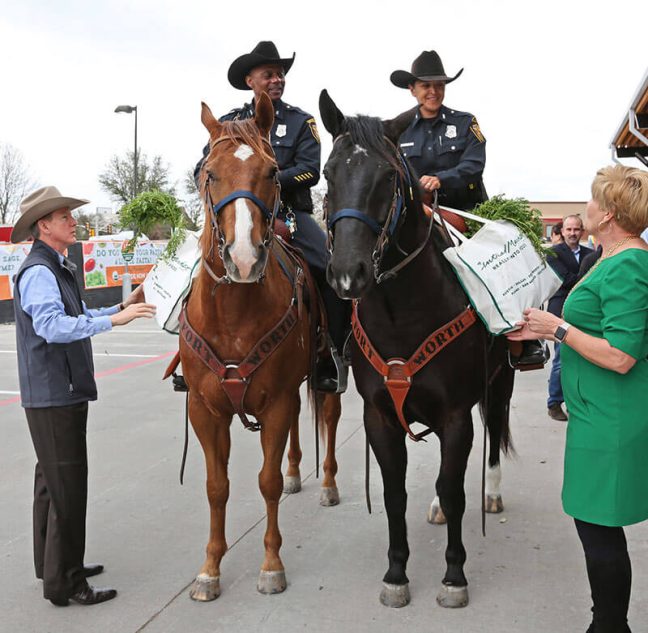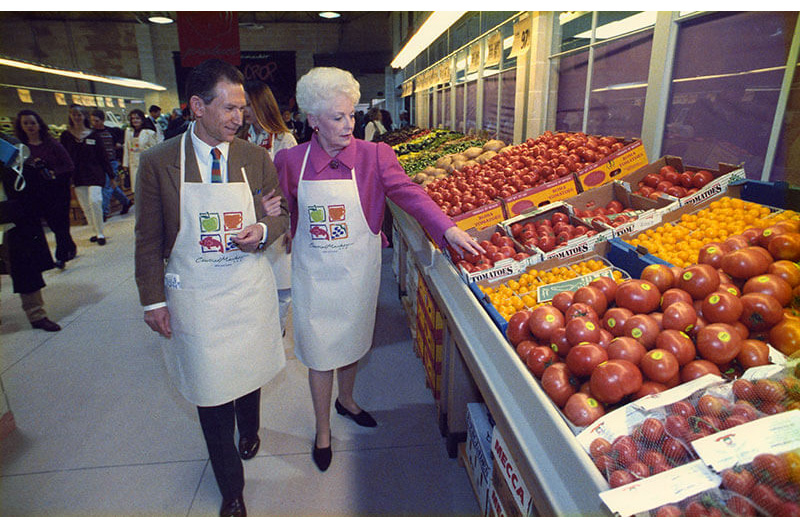Stephen Butt, H-E-B’s president of shareholder relations and the Central Market division, talks about the origins of Central Market and how it has evolved over the years.

What prompted the creation of Central Market? How did the idea for this concept come to be?
In the mid-1980s, H-E-B was becoming “restlessly dissatisfied” with the lack of innovation in the grocery retailing industry. A new store on the West Coast looked very similar to a new store on the East Coast. In response to this reality, H-E-B’s chairman, Charles Butt, was pushing the organization for more change and innovation.
It was against this backdrop that in the early ’90s H-E-B began to partner with the developer Barshop & Oles in creating a new shopping center on land owned by the Texas State Hospital, at the corner of 38th and North Lamar near the UT-Austin campus.
A creative team was assembled, and this group was charged with developing a “unique food-focused format” that would showcase the freshest foods domestically and from around the world. At this same time, the neighborhood this new shopping center would serve was expressing its desire for a “new and different type of store.”
So, the creation of Central Market was prompted by a desire for “shaking up the status quo in grocery retailing,” a premier piece of real estate and the community’s desire for a “new and different shopping experience.”
Given that this new, unique, food-focused market would not sell common, everyday brands like Coca-Cola or Frito-Lay, Tide or Pepsi, there were a number of predictions that this new, food-centric, fresh market store would fail to attract customers. And some advised us to not open the store.
Despite these warnings, H-E-B moved forward and opened our first Central Market on Jan. 22, 1994, with a special preview party that helped shape the way H-E-B opens important new stores today.

For the first year, the store was moderately successful. In year two, we began to notice more shoppers commuting from longer distances for their shopping, often carpooling from Houston or Dallas with large coolers as they took turns bringing their friends’ shopping lists to the new store.
By the third year, Central Market was becoming a “destination” fresh market, with customers regularly driving up to 25 miles to shop with us. Our new store was becoming one of Austin’s most popular tourist destinations.
Today H-E-B is known as a multi-format retailer. While 30 years ago Central Market was the first of H-E-B’s new formats, since that time concepts such as H-E-B Plus (with expanded general merchandise), Joe V’s Smart Shop (serving Houston and now DFW), Mi Tienda and Favor have been created and joined as important members of H-E-B’s family of brands.
We had dabbled in different formats before. There was a store called H-E-B Marketplace that we opened on the northwest side of San Antonio; that was really H-E-B’s first different type of store. We didn’t turn it into a format; it was a kind of one-of-a-kind, unique store. Over time, it transitioned back into the H-E-B portfolio, but it played an important forerunning role for Central Market.
At one time, we had a full network of Pantry stores across East Texas and Houston. They were very successful, and Pantry served an important role for H-E-B at that time. We don’t operate Pantry stores any longer – that chapter is behind us now.
More recently, our Joe V’s Smart Shop price format has been very successful in Houston. We have 10 locations in Houston and now one in DFW, and a second one to open after the first of the year.
We have our Mi Tienda format, offering authentic Hispanic cuisine and products. And we also have Favor, our e-commerce delivery service that we acquired in Austin some years ago as part of our becoming a digital e-commerce retailer.
So now we talk about H-E-B being a family of brands, a multi-format retailer. That’s who we are today. But Central Market played an important role in our beginning to evolve in that direction.
I would add that there are many leaders in H-E-B that support the different brands and formats. And none of our formats would be successful if we didn’t have the support of the full organization.
[RELATED: ‘Let’s Renew Our Wows’ – Central Market Celebrates 30 Years Of Sharing Love Of Food]
Has the Central Market format changed over the years or largely stayed the same?
The products we offer have changed dramatically over the past 30 years. As we introduce new products, frequently within the first year or two, these products work their way onto our competitors’ shelves as they become more “mainstream,” and we continue to move our customers onto the next new thing.
What has not changed is our longstanding commitment to “destination variety” – surprising the customer around each corner, offering the deepest variety in fresh produce, meat, seafood, floral, bakery, etc.
From day one, Central Market has been the “cook’s store,” the place where you can find any ingredient you need to fulfill every recipe. If Central Market doesn’t carry it, we’ll find it for you.
Walk me through what I would encounter on a trip to Central Market.
The Central Market shopping experience engages all of your senses – bright, fresh colors, all natural, lots of ice, cool temperatures for keeping produce, meat and seafood very fresh. You’ll find wood display tables, a fresh market in the truest sense, a wide range of pleasant smells – fresh juice, grilling meats, the aroma of fresh-cut flowers – and samples of great-tasting foods served by friendly, knowledgeable Partners (Central Market team members).
Shoppers are welcomed to “try before you buy.” We work to deliver “a surprise around every corner” and for our customers to leave feeling uplifted by their Central Market shopping experience.
How does each Central Market reflect the neighborhoods they serve?
Each of our 10 Central Markets has its own distinct personality, reflecting the differences in the local community and neighborhoods each serves. This begins with building our team of Partners – hiring the best and friendliest people from the neighborhoods closest to our stores.

Our Partners are the heart and soul of each Central Market, and the communities we serve are reflected in their faces and personalities.
We also feature murals in each store, located in prominent positions, that we have commissioned from local and nationally recognized artists. The original Central Market features a beautiful tile mural of Barton Springs, in Austin, created by Malou Flato, a highly respected Texas artist who splits her time between Texas and Montana. Central Market has commissioned other works for each of our locations to similarly reflect the communities we serve.
Most importantly, we localize each Central Market with a wide range of locally produced products from local suppliers, which is important to our customers and the supplier community. Localizing our assortment for customers is a longstanding commitment of Central Market.
It’s an exciting business; we’re proud of it. It’s helped, I think, H-E-B’s reputation as a quality retailer. Our team is proud of that. We’re only as good as our people, and we’ve got great leaders that lead these stores.
Tell us about Central Market’s charitable giving efforts.
As part of the H-E-B’s family of brands, Central Market participates in hosting our Feast of Sharing holiday dinners in both Dallas and Fort Worth. With the help of good-hearted volunteers – many of whom are our shoppers – and H-E-B and Central Market Partners, we serve more than 10,000 hot meals at each of our Feast of Sharing events in these two cities and have done so for many years.
Regarding H-E-B’s disaster relief efforts, when the F-3 tornado hit the city of Dallas in 2019, damaging and closing our Preston-Royal Central Market, H-E-B’s Mobile Kitchen was dispatched to this location to help with hot meals for first responders and neighbors near our store who lost their homes in this tragic event.
Also lost to the tornado were two public schools, which had to be closed due to severe damage. Several months following the tornado, H-E-B gave $1 million to the Dallas Independent School District to assist in the rebuilding efforts of these two schools.
Yes, H-E-B’s “Spirit of Giving” is alive and well at Central Market. And we try to be a gathering place for communities. The live music outside at some of our stores, the international cuisine-related events we hold regularly – like for Portugal and Argentina – those obviously bring a lot of people.
We enjoy when we see Central Market being a gathering place for the communities that we serve; that’s a role we’ve tried to play. There are only 10 Central Markets, so we feel a responsibility; they’ve got to be special and different stores. You’re not going to build 100 of them. We’ve only got 10, and our team takes a lot of pride in making the 10 as good as we possibly can.
Any plans for future Central Markets?
Given the unique nature of the Central Market format, we’re very selective of where and when we expand our network with new locations. We work closely with H-E-B’s real estate team to identify future opportunities that fit well with H-E-B’s overall real estate plans and where we feel Central Market can add a new store successfully.
We’re always evaluating new opportunities. Our next new location will likely be in the Uptown area of Dallas. We have a building, a former Albertsons, that we have been working to develop for several years. Following a few COVID-19-related delays, we are now working with the city and hope to have a new construction timetable to get this project underway in the very near future.

